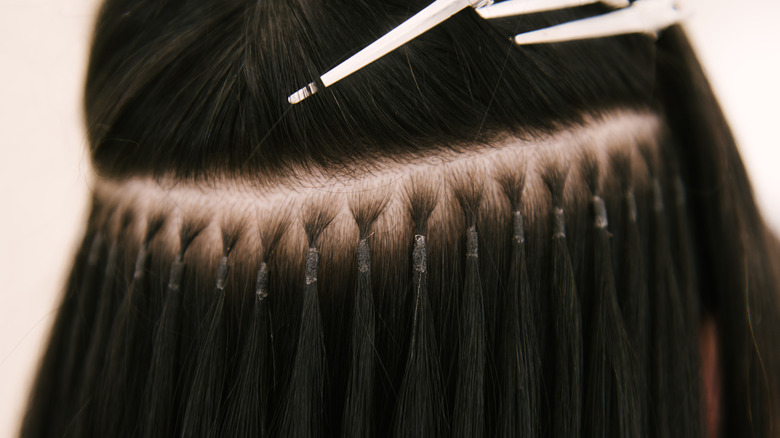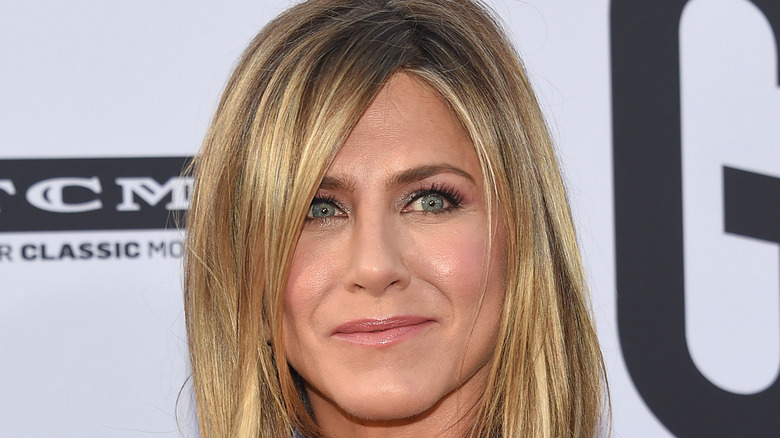What Really Happens To Your Hair When You Stop Wearing Hair Extensions
Hair extensions are one of the most effective ways to increase the length and volume of hair. Extensions are attached using varying techniques, such as the tape-in method, which attaches thin sections of extensions to the natural hair using tape. Another method, the keratin bond or strand-by-strand technique, uses an adhesive made from keratin — the same protein that your hair is made of.
The right hair extension installation can give length and volume that blends right into your natural hair. Each extension is securely attached to the root of the hair to ensure that the style lasts a while. Keratin extensions, for example, can last up to five months, while tape-ins can last as long as six!
Hair extensions are long-term hairdos, and many people get them done repeatedly because of this convenience. The downside is that the installation, daily wear, and removal of hair extensions stress the natural hair by pulling on it. Even safer methods, such as the microlinks hair extension technique that gives you natural-looking length, place pressure on your scalp. This pressure leaves damaging effects on the hair even after the extensions are long gone.
Your hair may break or shed after taking out your hair extensions
The most common after effect of hair extensions is breakage or shedding. This hair loss is a result of traction alopecia, which develops over weeks. Traction alopecia is a type of hair loss caused by constant tension to the scalp, which can be induced by frequent use of hair extensions, per a 2022 study published in the Journal of Clinical, Cosmetic, and Investigational Dermatology.
The effects of traction alopecia typically start from the scalp over the ears and develop over time, so a person could already have started to lose their hair before seeing any visible loss. Traction alopecia differs from patient to patient, causing subjects to lose varying amounts of hair after extensions. Worse still, the effects of traction alopecia can be permanent. Some people recover from this condition and grow back their hair, but others develop permanent bald spots.
Traction alopecia isn't the only danger to hair length from hair extensions. In many cases, people report slow growth after taking them out. However, it's essential to understand that hair extensions themselves do not slow down hair growth. Instead, the culprits are the installation, removal, and post-extension hair care methods. If they aren't carefully carried out, it becomes impossible for the hair to grow as well as it did in better conditions.
Your hair texture could change after hair extensions
Many of us have a love-hate relationship with our hair textures and have spent our whole lives learning about their specific needs. We may not think it's possible, but that texture can be changed due to the frequent use of hair extensions. This can occur for several reasons. If you use glue extensions, for example, the chemicals in the glue can weaken your hair over time.
Hair extensions can also thin out full and voluminous hair due to the pressure. Just ask Jennifer Aniston, who had to chop off all her hair due to damage from hair extensions. In an interview with InStyle, Aniston explained that the damage done to her hair was caused by constantly wearing hair extensions for "Friends." Aniston stated that her hair was thinned out, stunted, and beyond repair.
If you wear extensions, considering other hair choices is a great idea. The tension on the hair isn't worth the extra length. Plus, beauty has nothing to do with hair length. Consider learning how to rock clip-in hair extensions if you use extensions for volume. Alternatively, you could try wigs — they look fabulous, and you can never have too many. Research the best wigs for your face shape for a gorgeous and healthy look.


